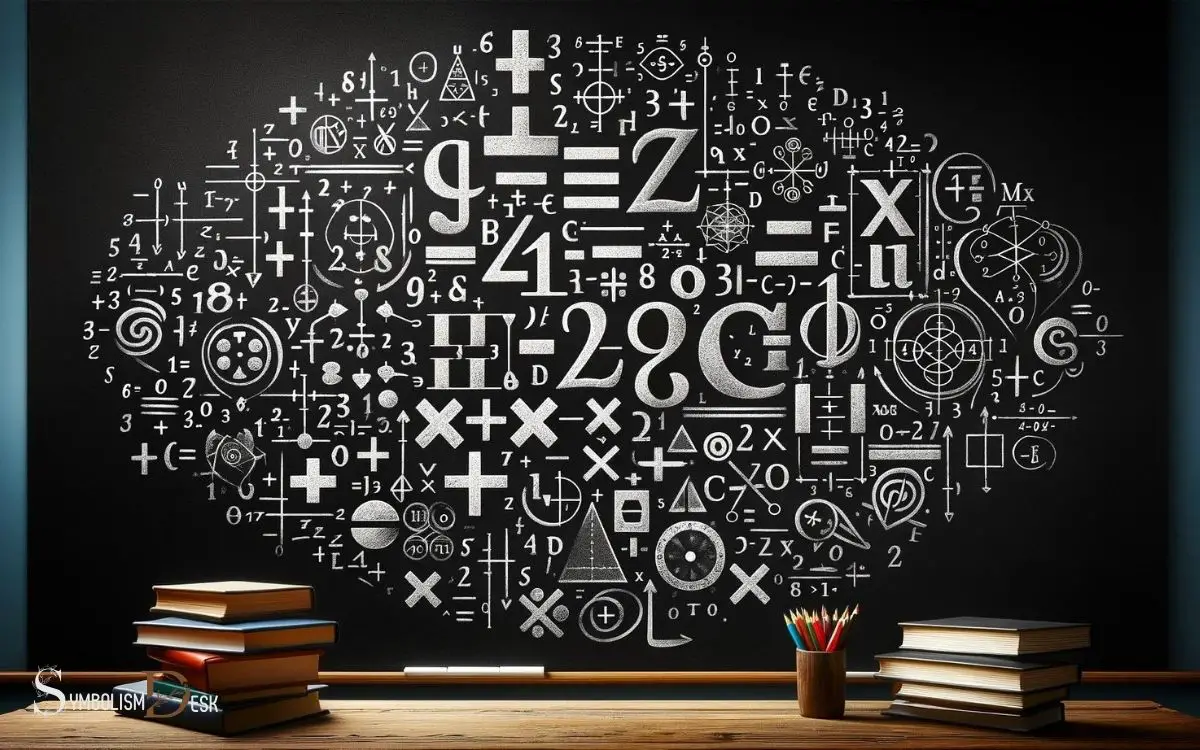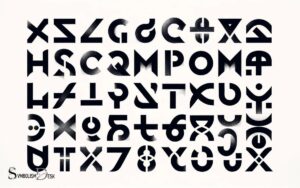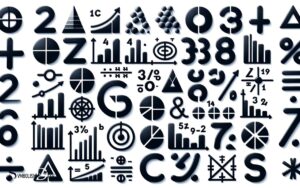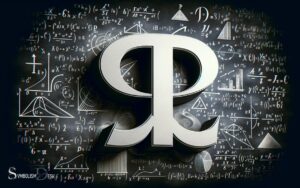Translate Math Symbols to English: Patterns!
Mathematical symbols are a concise language that mathematicians and scientists use to express relationships, patterns, and functions clearly and succinctly.
Learning to translate these symbols into English words is crucial for understanding and communicating complex mathematical concepts.
When translating math symbols to English, it’s important to become familiar with the various symbols and their corresponding verbal expressions.
Here’s a short example of common math symbols and how they might be translated:

Key Takeaway
Comprehensive Guide to Mathematical Symbols and Their English Translations
| Symbol | English Translation | Category | Example Usage |
|---|---|---|---|
| + | Plus | Arithmetic | 2 + 3 = 5 |
| – | Minus | Arithmetic | 7 – 2 = 5 |
| × | Times | Arithmetic | 4 × 6 = 24 |
| ÷ | Divided by | Arithmetic | 8 ÷ 4 = 2 |
| = | Equals | Algebra | x + 2 = 6 |
| ≠ | Not equal to | Algebra | x ≠ 4 |
| ∠ | Angle | Geometry | ∠ABC |
| ∆ | Triangle | Geometry | ∆ABC |
| ∫ | Integral | Calculus | ∫ f(x) dx |
| d/dx | Derivative | Calculus | d/dx (x^2) |
| ∈ | Element of | Set Theory | 3 ∈ {1, 2, 3, 4} |
| ∀ | For all | Logic | ∀x ∈ R, x^2 ≥ 0 |
Basic Arithmetic Symbols
The plus symbol (+) represents addition in basic arithmetic operations. When this symbol appears between two numbers, it indicates that the numbers should be added together.
For example, in the expression 3 + 4, the plus symbol signifies that 3 and 4 are to be combined, resulting in a sum of 7.
Addition is a fundamental mathematical operation used to find the total when two or more quantities are combined.
It is a concept that is introduced early in mathematics education and serves as a building block for more complex mathematical processes.
Understanding the meaning and application of the plus symbol is essential for developing proficiency in basic arithmetic and laying the foundation for higher-level mathematical skills.
Algebraic Notation
In the study of algebraic notation, understanding the meaning behind the symbols is crucial for solving equations and translating mathematical expressions.
This subtopic aims to clarify the various algebraic symbols and their corresponding English translations, providing a foundation for further mathematical study. By comprehending these symbols, individuals can effectively manipulate and solve algebraic equations.
Algebraic Symbols Explained
Algebraic symbols are commonly used to represent mathematical operations and relationships in algebraic notation. Understanding these symbols is crucial for working with algebraic expressions and equations.
Here are some key algebraic symbols explained:
- Variables: Symbols such as x, y, or z are used to represent unknown quantities in algebra. They can take on different values in equations and expressions.
- Operators: Mathematical operations like addition (+), subtraction (-), multiplication (× or *), division (÷ or /), and exponentiation (^) are represented by specific symbols in algebra.
- Equality: The symbol “=” denotes equality in algebra, indicating that the expressions or values on both sides are equivalent.
Having a good grasp of these algebraic symbols is fundamental for effectively solving algebraic problems and understanding mathematical relationships.
Translating Math Expressions
Translating mathematical expressions from algebraic notation requires a clear understanding of the symbols and their corresponding English meanings.
In algebra, letters are used to represent numbers or variables, and various symbols denote mathematical operations.
For instance, the “+” symbol signifies addition, “−” denotes subtraction, “×” indicates multiplication, and “÷” represents division. These symbols form the foundation of arithmetic and allow us to perform calculations efficiently. Translating words into math symbols is a crucial skill, especially when solving word problems or expressing complex ideas in a concise mathematical form. By understanding how to represent operations symbolically, we can bridge the gap between language and mathematics, making problem-solving more systematic and precise.
Additionally, parentheses are used to indicate the order of operations within an expression. When translating algebraic notation to English, it is crucial to accurately convey the operations and relationships between the variables.
For example, the expression “3x + 5” would be read as “three times x, plus five.” Understanding the language of algebraic notation enables individuals to interpret and solve mathematical problems effectively, providing a foundation for advanced mathematical concepts.
Geometric and Trigonometric Symbols
The concept of points in geometry serves as the fundamental building blocks for constructing geometric shapes and understanding their properties.
Points are represented by a single dot and have no size or dimensions, but play a crucial role in defining lines, angles, and shapes.
By understanding the characteristics and relationships of points, we can gain insight into the structure and measurements of geometric figures.
Angle Measurements in English
Angle measurements in English are essential for understanding geometric and trigonometric symbols.
When describing angle measurements in English, it is important to be familiar with the following concepts:
- Degrees: The most commonly used unit for measuring angles, where a full circle is divided into 360 equal parts, each part being 1 degree.
- Radians: An alternative unit for measuring angles, commonly used in advanced mathematics and physics, where a complete circle is divided into 2π radians.
- Sine, Cosine, and Tangent: Trigonometric functions used to relate the angles of a right-angled triangle to the lengths of its sides, forming the basis of trigonometry.
Understanding these concepts and their English representations is crucial for effectively working with geometric and trigonometric symbols in mathematical and scientific contexts.
Geometric Shapes and Names
In the context of geometric and trigonometric symbols, a solid understanding of angle measurements in English is fundamental for effectively interpreting and utilizing mathematical and scientific notation.
Geometric shapes and names play a pivotal role in various mathematical and scientific disciplines. Understanding these shapes and their names in English is essential for clear communication and accurate problem-solving.
Some common geometric shapes include triangles, squares, circles, rectangles, pentagons, hexagons, and octagons, each with distinct properties and characteristics.
Additionally, trigonometric symbols such as sine, cosine, and tangent are fundamental in describing the relationships between the angles and sides of triangles.
Mastery of these geometric and trigonometric symbols in English facilitates effective communication and comprehension within the fields of mathematics, science, engineering, and beyond.
Calculus and Mathematical Analysis
Calculus and mathematical analysis involve the study of rates of change and accumulation using mathematical functions and their derivatives. This field is crucial in understanding various natural phenomena and engineering applications.
In calculus, some key concepts include:
- Derivatives: These represent the rate of change of a function and are used to solve problems involving motion, growth, and optimization.
- Integrals: These are used to calculate the accumulation of quantities, such as area, volume, and total distance traveled.
- Limits: They are fundamental in defining derivatives and integrals, representing the behavior of functions as they approach certain values.
Understanding these concepts is essential for grasping the fundamental principles of calculus and mathematical analysis and their applications in real-world scenarios.
Set Theory and Logic Symbols
Set theory and logic symbols are essential components of mathematical language and formal reasoning. In set theory, the symbol ∈ denotes “belongs to,” while ∉ signifies “does not belong to.”
The symbol ∅ represents the empty set, and ⊆ means “is a subset of.” In logic, ¬ represents negation, ∧ signifies “and,” ∨ denotes “or,” → represents “implies,” and ↔ signifies “if and only if.”
These symbols play a crucial role in expressing mathematical concepts and propositions with precision and conciseness.
Understanding these symbols is fundamental for anyone working with mathematical reasoning, formal logic, computer science, and related fields.
Mastery of these symbols allows for clear and unambiguous communication of mathematical ideas, aiding in the development of rigorous mathematical arguments and proofs.
Specialized Mathematical Symbols
Exploring specialized mathematical symbols involves understanding their unique applications and interpretations within mathematical discourse and formal reasoning.
These symbols serve as powerful tools for concise communication and representation of complex mathematical concepts.
Here are three examples of specialized mathematical symbols:
- Partial Derivative Symbol (∂): This symbol represents the concept of taking a derivative of a function with respect to a specific variable while holding other variables constant. It is commonly used in multivariable calculus and the study of differential equations.
- Infinity Symbol (∞): This symbol denotes unboundedness and is used to represent a quantity larger than any finite number. In calculus and real analysis, it is employed to describe limits, infinite series, and unbounded sets.
- Element of Symbol (∈): This symbol signifies that a particular element belongs to a set. It is fundamental in set theory and is used to express membership relations between elements and sets.
Conclusion
The translation of math symbols to English is essential for understanding and communicating mathematical concepts across different languages and disciplines.
From basic arithmetic symbols to specialized mathematical notations, the language of mathematics is universal and precise.
As we continue to explore and apply mathematical principles in various fields, the ability to accurately translate and interpret mathematical symbols will remain crucial for advancing our understanding of the world around us.






